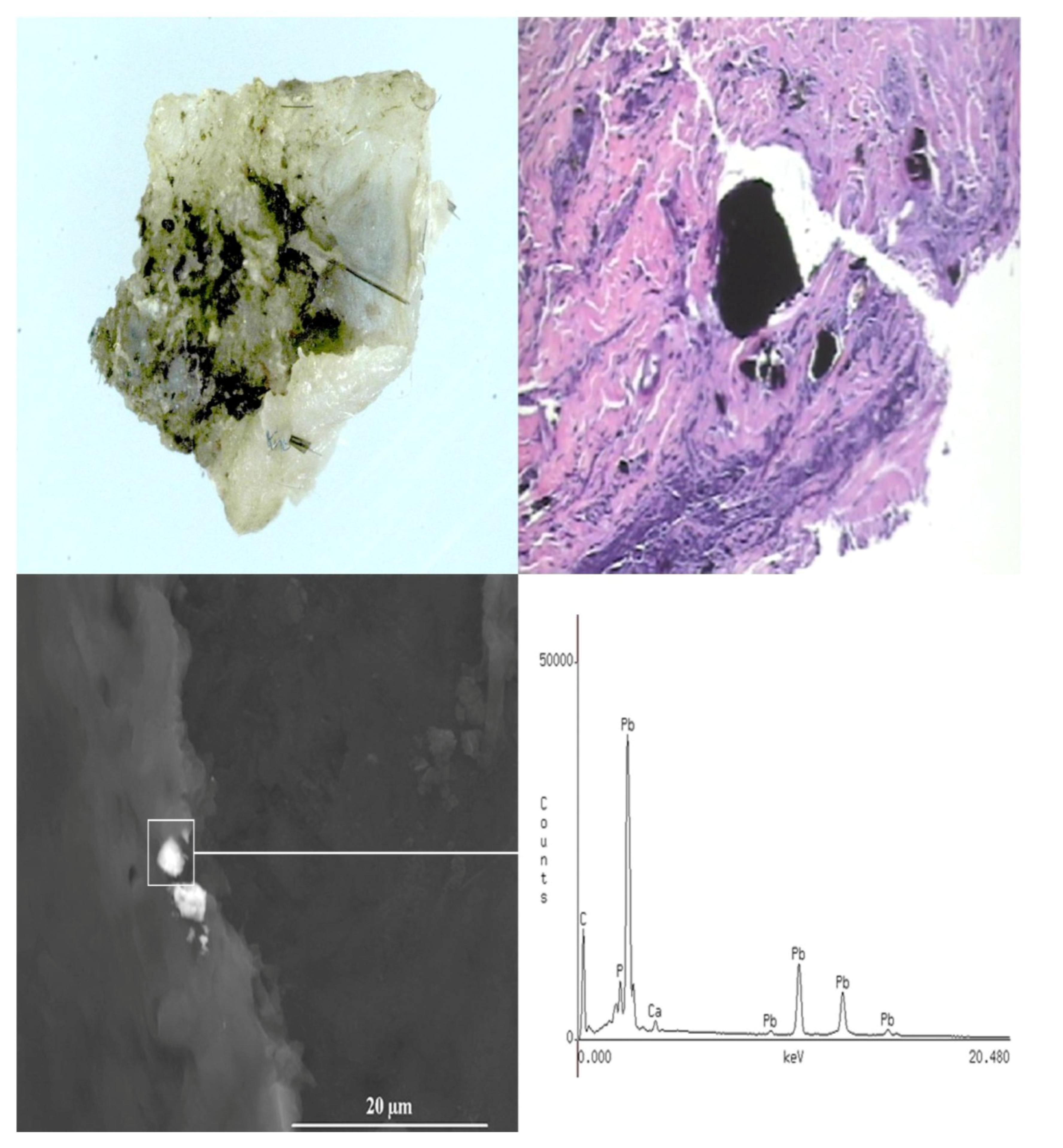

The microscopic description, or the "micro" is a narrative description of the findings gained from examination of the glass slides under the microscope. The microscope slides prepared from the processed samples will be labeled with the same numbers as the cassettes, and the pathologist doing the microscopic examination can, by referring to the typed gross description, know from what part of the specimen the tissue on the slide came. The last paragraph of the gross description gives the identifying "codes" of the slices of the specimen submitted for microscopic examination in cassettes. In addition, a lymph node was serendipitously found adherent to the spleen, and this was briefly described as having a normal appearance. Much of the remainder of the verbage relates to "pertinent negatives," or things that were routinely looked for but not found, such as a rupture of the spleen capsule (suggesting an intraoperative accident), blood clots ("thrombi") in the vessels supplying the spleen, and evidence of an infection (in which case the cut surface of the spleen would be soft instead of firm). These possibly represent the tumors of Hodgkin's disease, subject to confirmation by the microscopic examination. In the spleen described above, the pathologist found a few lumps (nodules), representing the most important data in this gross examination. Summary of cassettes: 1, hilar blood vessels 2, hilar lymph node, entirely submitted 3 - 6 spleen nodules, entirely submitted 7 - 8, spleen, away from nodules. The remainder of the cut surface is homogeneous, dark purple, and firm. On section of the spleen at 2 to 3 mm intervals, there are three well-defined pale-grey nodules on the cut surface, ranging from 0.5 to 1.1 cm in greatest dimension. The hilar soft tissues contain a single, ovoid, 1.2-cm lymph node with a dark grey cut surface and no focal lesions. The blood vessels of the hilum of the spleen are patent, with no thrombi or other abnormalities. The external surface is smooth, leathery, homogeneous, and dark purplish-brown. An entire spleen, weighing 127 grams, and measuring 13.0 x 4.1 x 9.2 cm. The following is the gross description of a spleen removed to assess whether Hodgkin's disease (a cancer of lymph tissues) has spread into it: Larger organs removed as biopsies have correspondingly longer and more detailed gross descriptions. The "Cassette 'A', all, bisected" phrase indicates that the specimen was cut in half ("bisected"), submitted for tissue processing in its entirety ("all") in a small container (cassette) labeled "A," which will eventually be placed in the tissue processor. After that is a textual description of what the specimen looked like, followed by measurements indicating its size. In the above example, the first item (in quotes) is an exact recitation of how the specimen was labeled by the doctor who took the biopsy. "Polyp of sigmoid colon." An ovoid, smooth- surfaced, firm, pale tan nodule, measuring 0.6 x 0.4 x 0.3 cm. A typical gross description of an endoscopic colon biopsy follows:
#WHITE TAN TISSUE FRAGMENTS MEANING CODE#
This is the "gross exam" or the "gross." Some pathologists may refer to the gross exam as the "macroscopic." Most biopsies are small, nondescript bits of tissue, so the gross description is brief and serves mostly as a way to code which biopsy came from what area and to use for troubleshooting if there is a question of specimen mislabeling. The pathologist begins the examination of the specimen by dictating a description of the specimen as it looks to the naked eye.


 0 kommentar(er)
0 kommentar(er)
